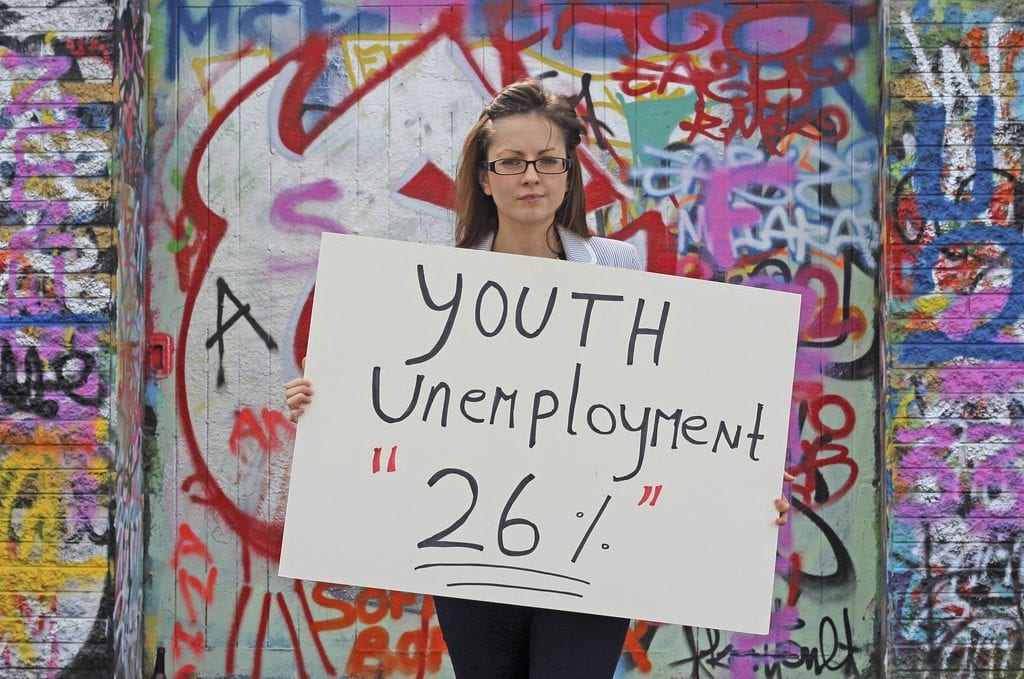
Strategies to Combat High Unemployment Levels
Updated Sept 2023
In a world filled with economic challenges, one persistent issue that continues to plague societies across the globe is the problem of high unemployment levels. This predicament affects individuals seeking stable employment and has far-reaching implications for the overall well-being of a nation’s economy.
Understanding the Gravity of the Issue
The Consequences of High Unemployment
High unemployment levels are like a persistent thorn in the side of any economy. It leads to a host of interconnected problems, such as:
- Economic Downturns: High unemployment rates can trigger economic recessions as consumer spending decreases, leading to a decrease in demand for goods and services.
- Social Unrest: People without stable jobs may become disheartened and frustrated, potentially resulting in social unrest and crime rates.
- Burden on Welfare Systems: Governments must allocate substantial funds to support unemployed citizens, putting immense pressure on welfare systems.
Navigating the Path to Employment
Job Creation Initiatives
- Public-Private Partnerships: Collaboration between government and private sectors can lead to the creation of job opportunities through investments in infrastructure, technology, and other growth areas.
- Entrepreneurship Promotion: Encouraging entrepreneurship through funding, mentorship, and reduced bureaucratic hurdles can empower individuals to create their job opportunities.
Skill Development and Education
- Vocational Training: Investing in vocational training programs can equip the workforce with the skills needed for emerging industries.
- Education Reform: Continuous improvement in the education sector ensures that students are prepared for the jobs of the future.
Fostering Innovation and Technology
Embracing the Digital Age
- Digital Upskilling: Providing training in digital skills can enable job seekers to participate in the tech-driven job market.
- Tech Start-up Incubators: Supporting technology start-ups can lead to the creation of high-tech jobs and innovation hubs.
Encouraging Work-Life Balance
Flexible work arrangements, particularly remote work opportunities, have been recognized for their potential to broaden job opportunities and increase accessibility for individuals in remote or underserved areas. Here are some key points regarding the benefits of remote work in promoting inclusivity and expanding employment options:
1. Geographic Flexibility: Remote work allows individuals to work from any location, reducing the constraints imposed by geographical proximity to job opportunities. This mainly benefits individuals living in rural areas or areas with limited job prospects. Remote work enables them to access employment opportunities without relocation, which can be costly and disruptive.
2. Overcoming Commuting Challenges: Remote work eliminates the need for daily commuting, which can be burdensome, time-consuming, and costly for many individuals. By eliminating or significantly reducing commuting requirements, remote work provides individuals more flexibility in managing their time and reduces stress associated with long commutes.
3. Enhanced Work-Life Balance: Flexible work arrangements, including remote work, offer the potential for improved work-life balance. This can be particularly advantageous for individuals with caregiving responsibilities, disabilities, or those seeking more control over their schedules. Remote work can provide the flexibility to accommodate personal commitments better and create a healthier integration of work and personal life.
4. Increased Job Opportunities: Remote work expands the pool of potential job opportunities for individuals facing barriers to traditional in-person employment. It allows companies to tap into talent from diverse locations and hire individuals with the required skills and qualifications, irrespective of their area. This can increase employment options for individuals with limited local job opportunities.
5. Inclusivity and Diversity: Organizations can foster diversity and inclusivity by embracing remote work arrangements. Remote work can attract a more diverse workforce, including individuals from different backgrounds, abilities, and demographics. It also creates an environment where individuals are evaluated based on their skills and performance rather than their physical presence in a particular location.
Remote Work Opportunities:
Promoting remote work can indeed open up job opportunities for a broader range of individuals, including those in remote or underserved areas. Here are some key points to consider:
1. Geographic Accessibility: Remote work allows individuals to work from anywhere with an internet connection, eliminating the requirement to be physically present at a specific location. This provides opportunities for individuals living in remote or underserved areas to access job opportunities that were previously unavailable to them due to geographical constraints.
2. Overcoming Local Job Market Limitations: Remote work enables individuals to seek employment beyond their local job market. It allows them to tap into a global or national job market, giving them access to a wider range of employment options and industries. This can be particularly beneficial for individuals living in areas with limited job prospects or industries.
3. Talent Pool Expansion: For employers, remote work opens up the possibility of accessing talent from diverse locations. They are not limited to hiring individuals who are within commuting distance of their physical office. This expands the talent pool and allows employers to attract skilled professionals who may not be available locally.
4. Inclusive Hiring Practices: Remote work provides an opportunity for companies to adopt more inclusive hiring practices. They can prioritize skills, qualifications, and experience rather than focusing on proximity to the office. This can benefit individuals from underrepresented communities, individuals with disabilities, or those facing commuting or relocating challenges.
5. Reduced Relocation Costs: Remote work eliminates the need for employees to relocate for job opportunities. This can significantly reduce the financial burden of moving to a new area for employment. It allows individuals to pursue career opportunities without uprooting their lives or incurring significant relocation costs.
6. Flexibility for Work-Life Balance: Remote work offers flexibility in managing work and personal life commitments. This can be particularly beneficial for individuals with caregiving responsibilities, those with health limitations, or those who prefer a more flexible work schedule. Remote work allows them to balance their professional and personal obligations more effectively.
Promoting remote work as a viable option can help create a more inclusive job market, providing opportunities for individuals in remote or underserved areas to participate in the workforce and contribute their skills and expertise.
Reduced Working Hours:
Reducing working hours while ensuring fair wages can positively impact overall well-being and job satisfaction. Here are some key points to consider:
1. Work-Life Balance: Reducing working hours allows individuals to allocate more time and energy to their personal lives, such as spending quality time with family, pursuing hobbies, engaging in physical activities, or caring for emotional well-being. This improved work-life balance can reduce stress levels and enhance overall well-being.
2. Health and Well-being: Long working hours have been associated with various adverse health outcomes, including increased risk of stress-related illnesses, mental health issues, and burnout. By reducing working hours, individuals have more time to rest, relax, and engage in activities that promote physical and psychological well-being. This can contribute to improved health outcomes and job satisfaction.
3. Productivity and Focus: Studies have shown that excessive working hours can lead to decreased productivity and diminished concentration levels. By implementing reduced working hours, employees can have more focused and efficient work periods, leading to improved productivity and quality of work. Working fewer hours can also help individuals maintain higher motivation and engagement.
4. Job Satisfaction and Retention: Offering reduced working hours as an option can increase job satisfaction and employee retention rates. Employees who can achieve a better work-life balance are more likely to feel valued by their employers and have higher job satisfaction. This, in turn, can contribute to increased loyalty, reduced turnover, and a positive work environment.
5. Workforce Diversity and Inclusion: Implementing reduced working hours can make employment more accessible to individuals who have personal commitments or responsibilities that require a shorter workweek. This includes parents with childcare responsibilities, individuals pursuing further education, or those with caregiving obligations. Organizations can foster a more inclusive and diverse workforce by accommodating diverse needs through reduced working hours.
6. Creativity and Work Engagement: Providing employees with reduced working hours can create opportunities for increased creativity and engagement. Having more leisure time and space for personal activities can stimulate creative thinking, provide opportunities for personal growth, and foster a healthier work-life integration. This can lead to innovative ideas, improved problem-solving, and a more motivated workforce.
Conclusion
High unemployment levels are a complex issue that requires multifaceted solutions. By fostering collaboration, investing in education and skills, embracing innovation, and promoting a healthy work-life balance, societies can work towards reducing unemployment rates and ensuring a brighter future for all. It is time to take proactive steps towards unlocking opportunities for the workforce and creating a more prosperous world for everyone.
Remember, the key to overcoming this challenge lies in our collective efforts. Together, we can turn the tide on high unemployment levels and build a future filled with promise and prosperity.
Originally Published on: Sep 26, 2018; Updated Over the Years with the Latest Update Done in September 2023
Other Articles you might find to be of interest
Serenade for Your Heart: The Symphony of a Nourishing Breakfast











“Every crisis is engineered by the Fed including the 2008 crisis; Idea is to strip power from the masses, Financial crisis of 2008 enriched the banks and screwed innocent Citizens, Financial crisis of 2008 was engineered so the Fed could destroy American Middle class forever, High unemployment rates here to stay because agenda is to empower the rich & Fleece the poor”
Now we have one of the richest oligarchs in the world as President of the United States. It looks like their plan worked.